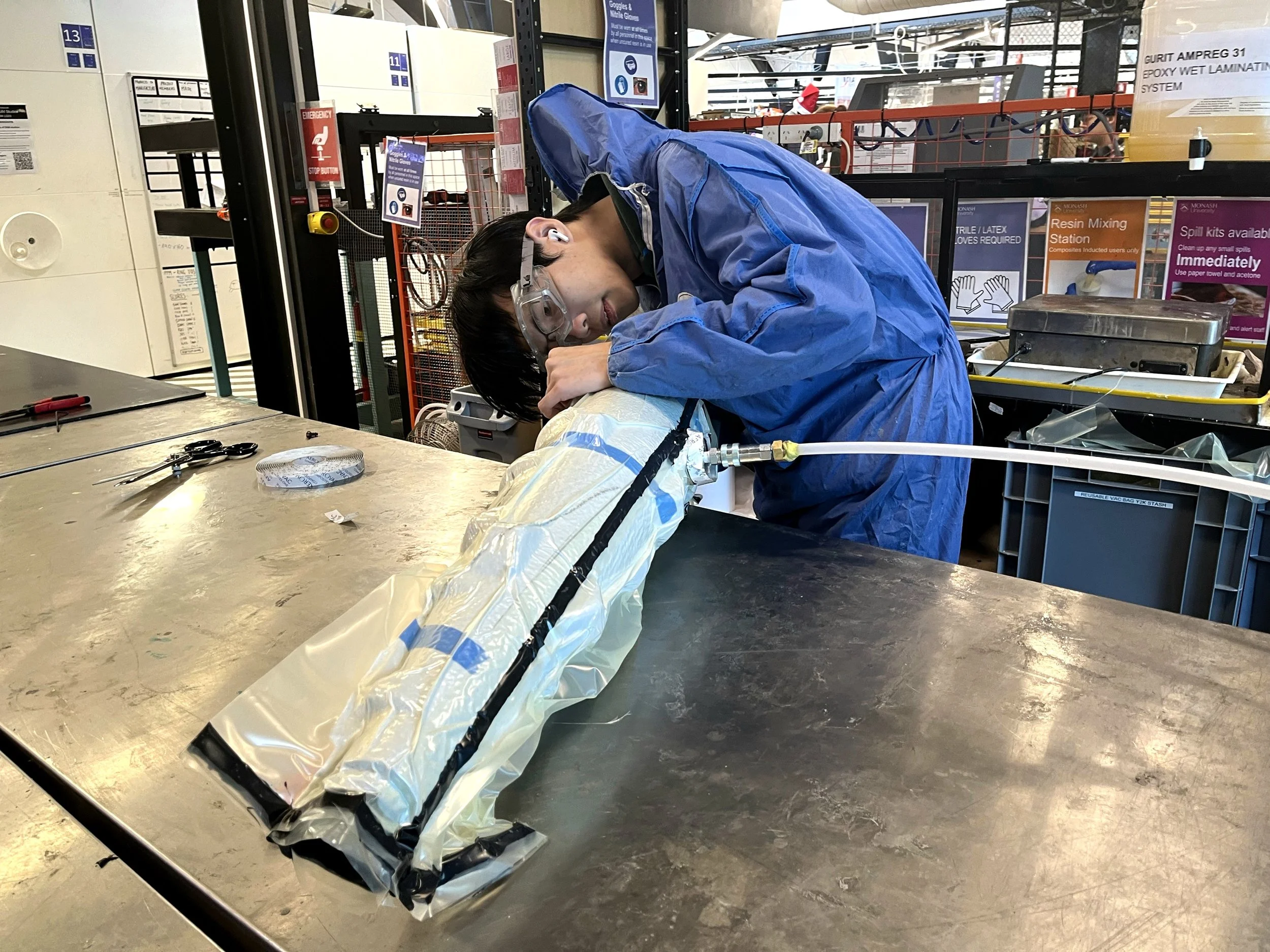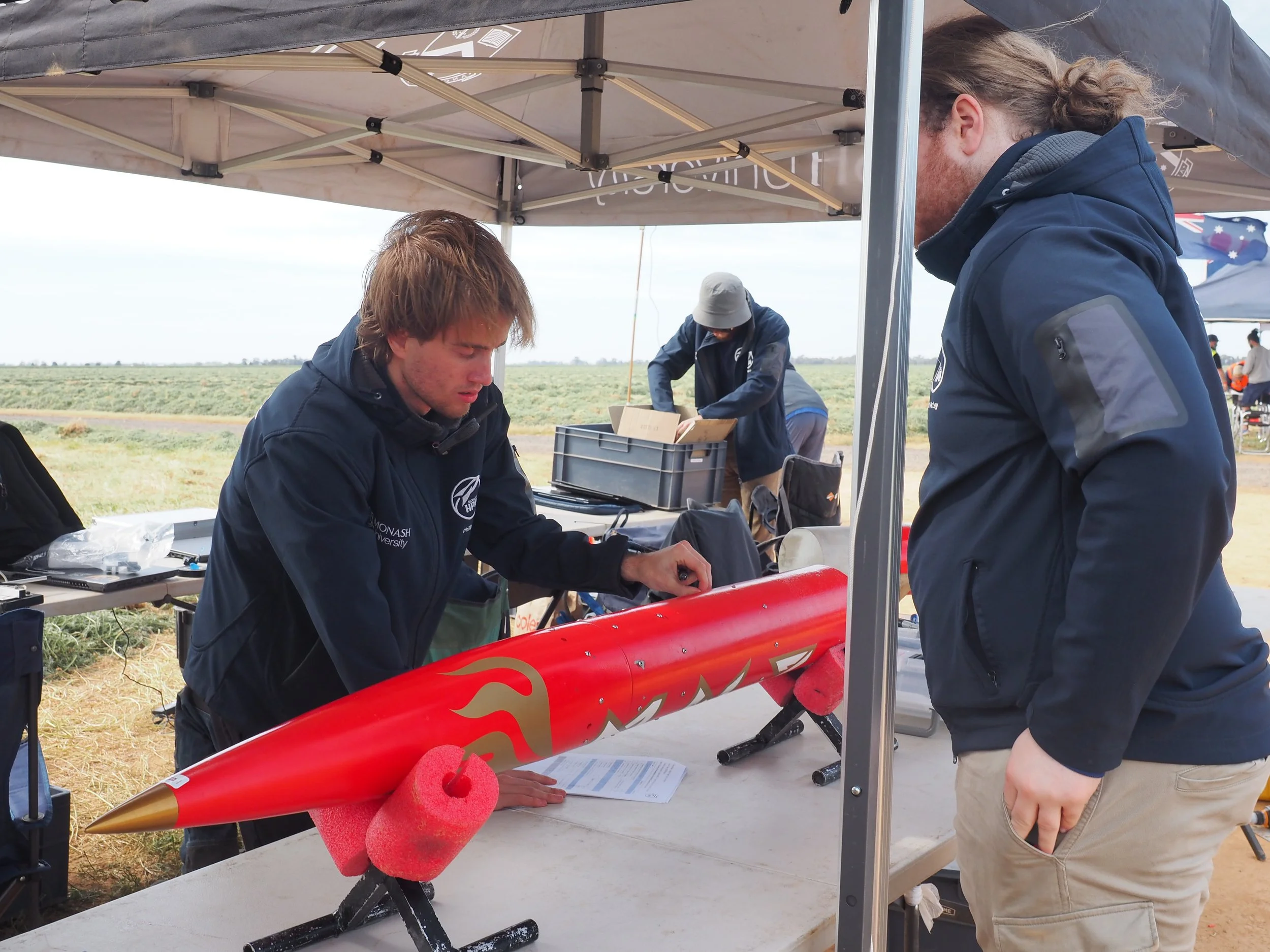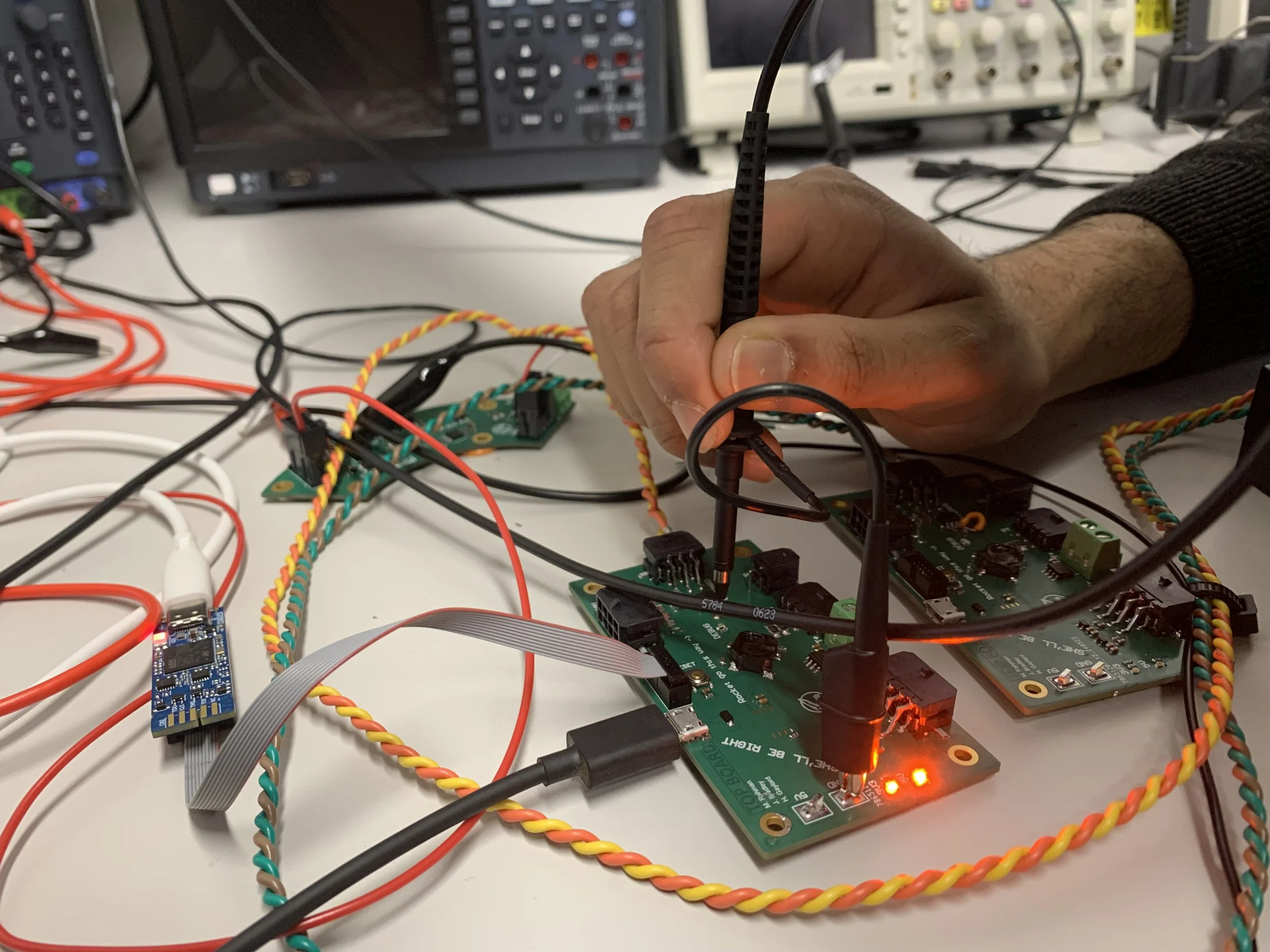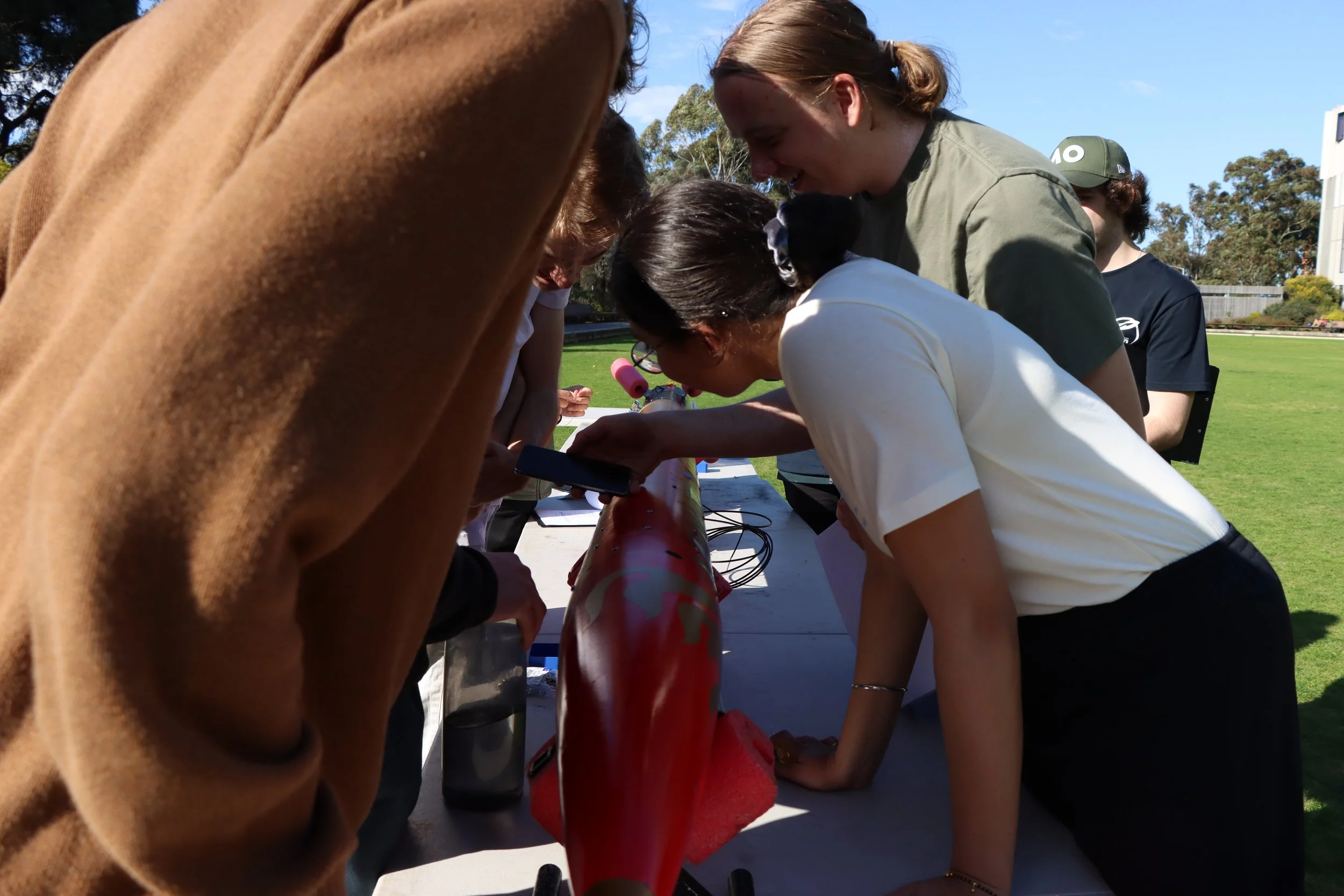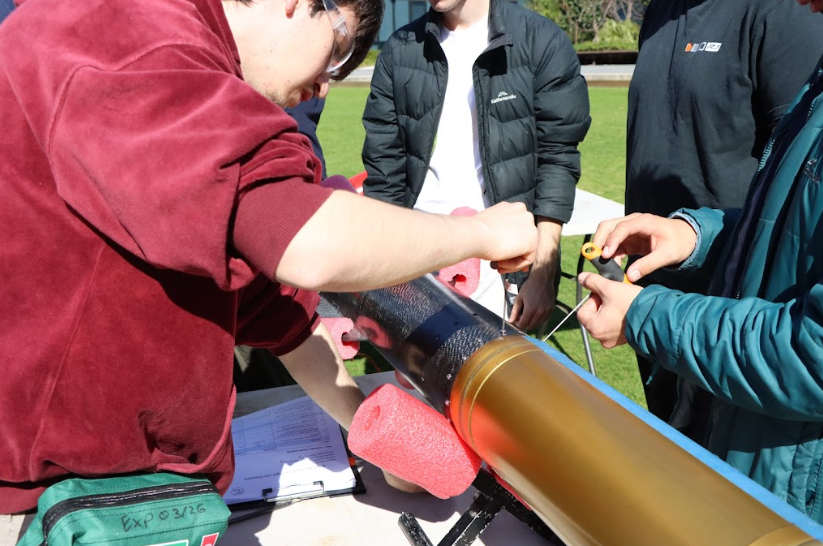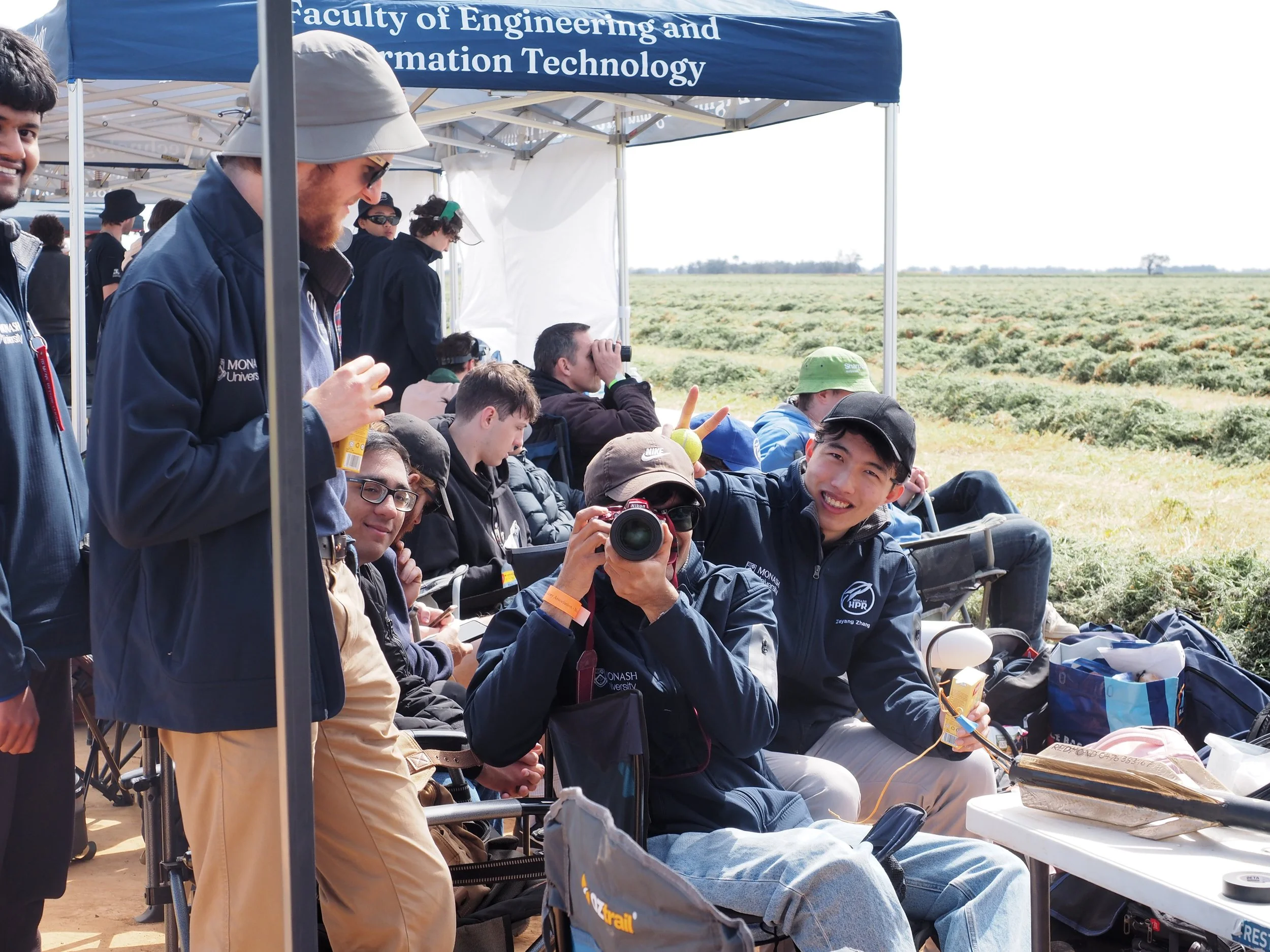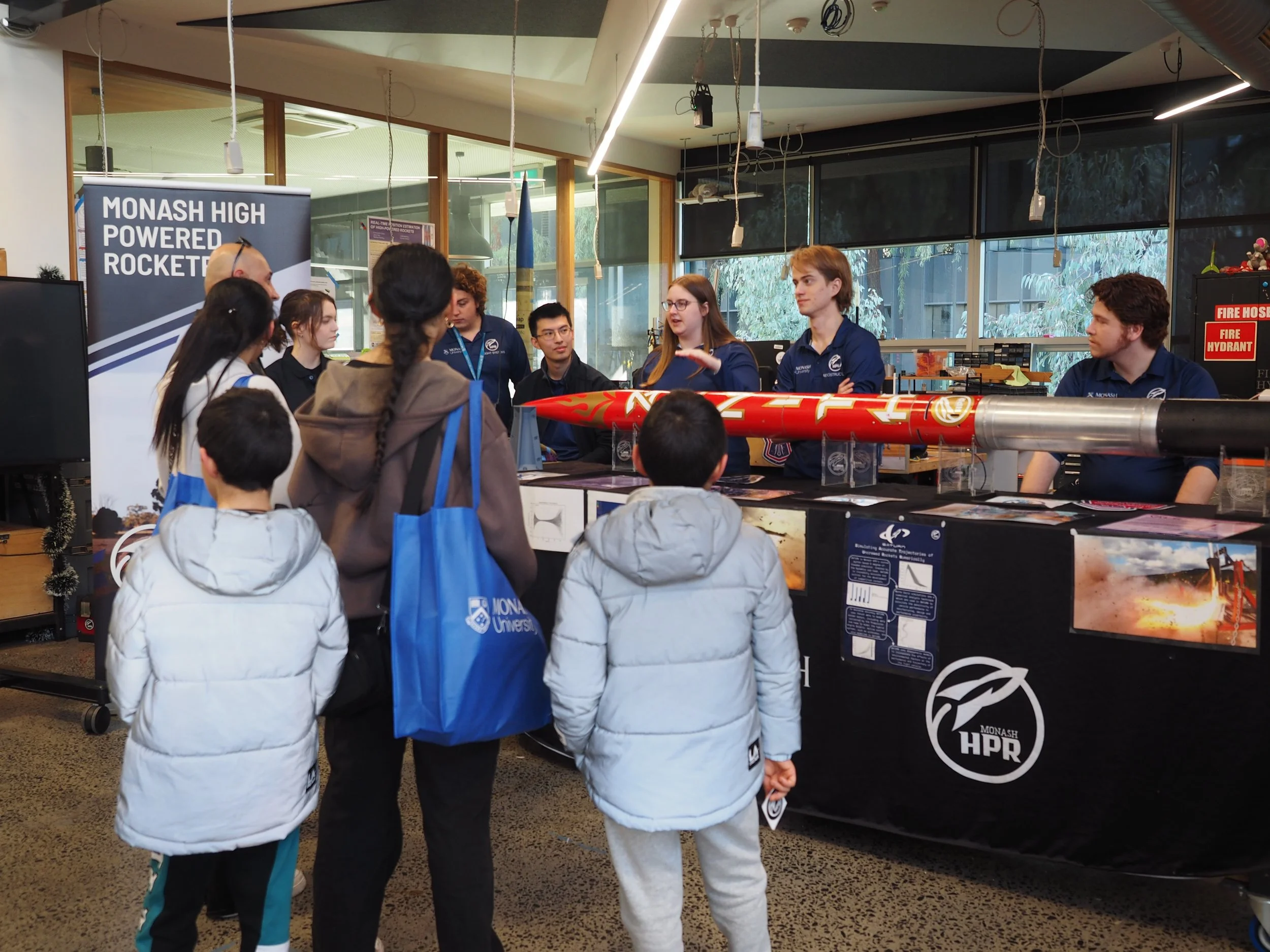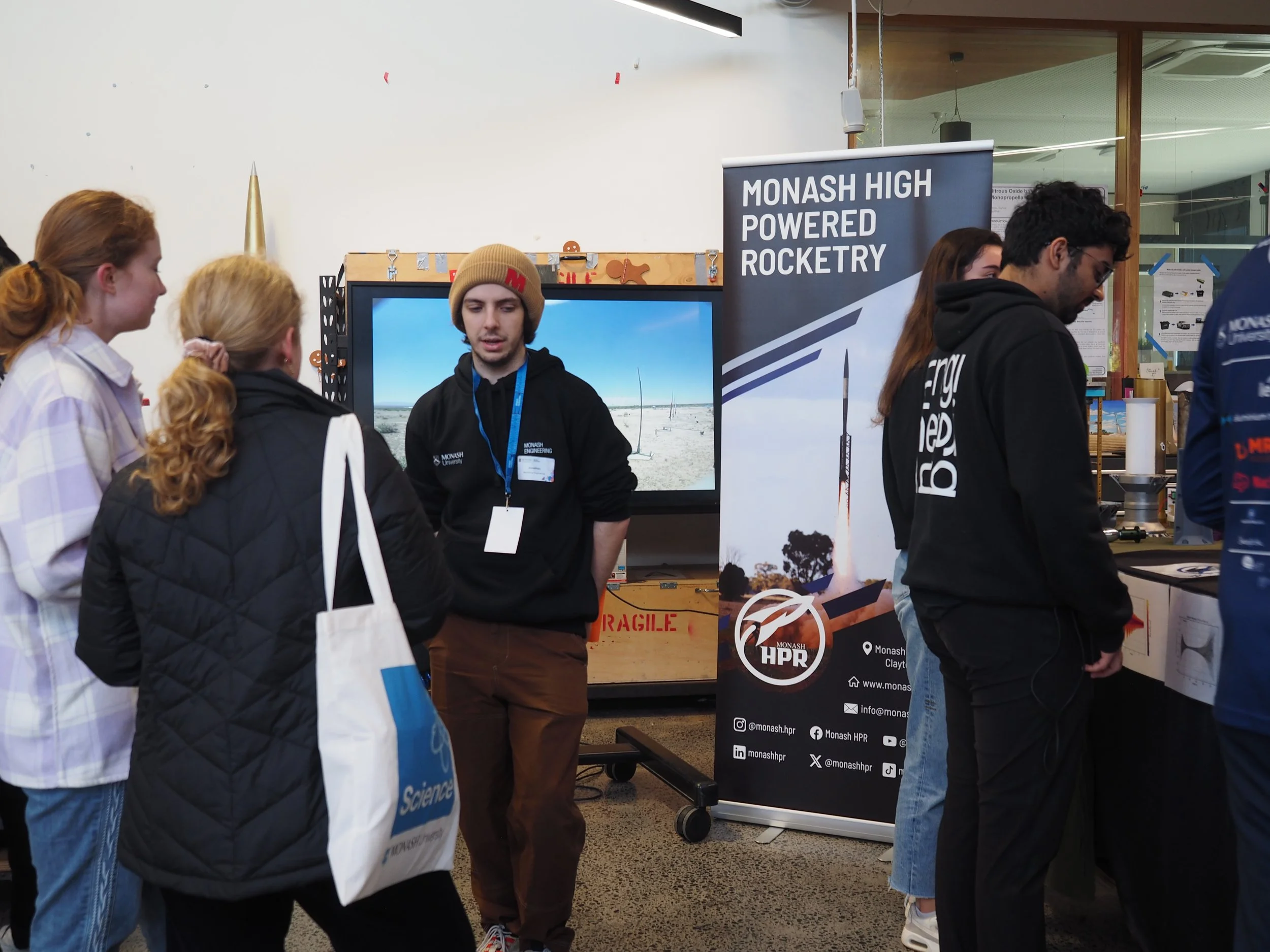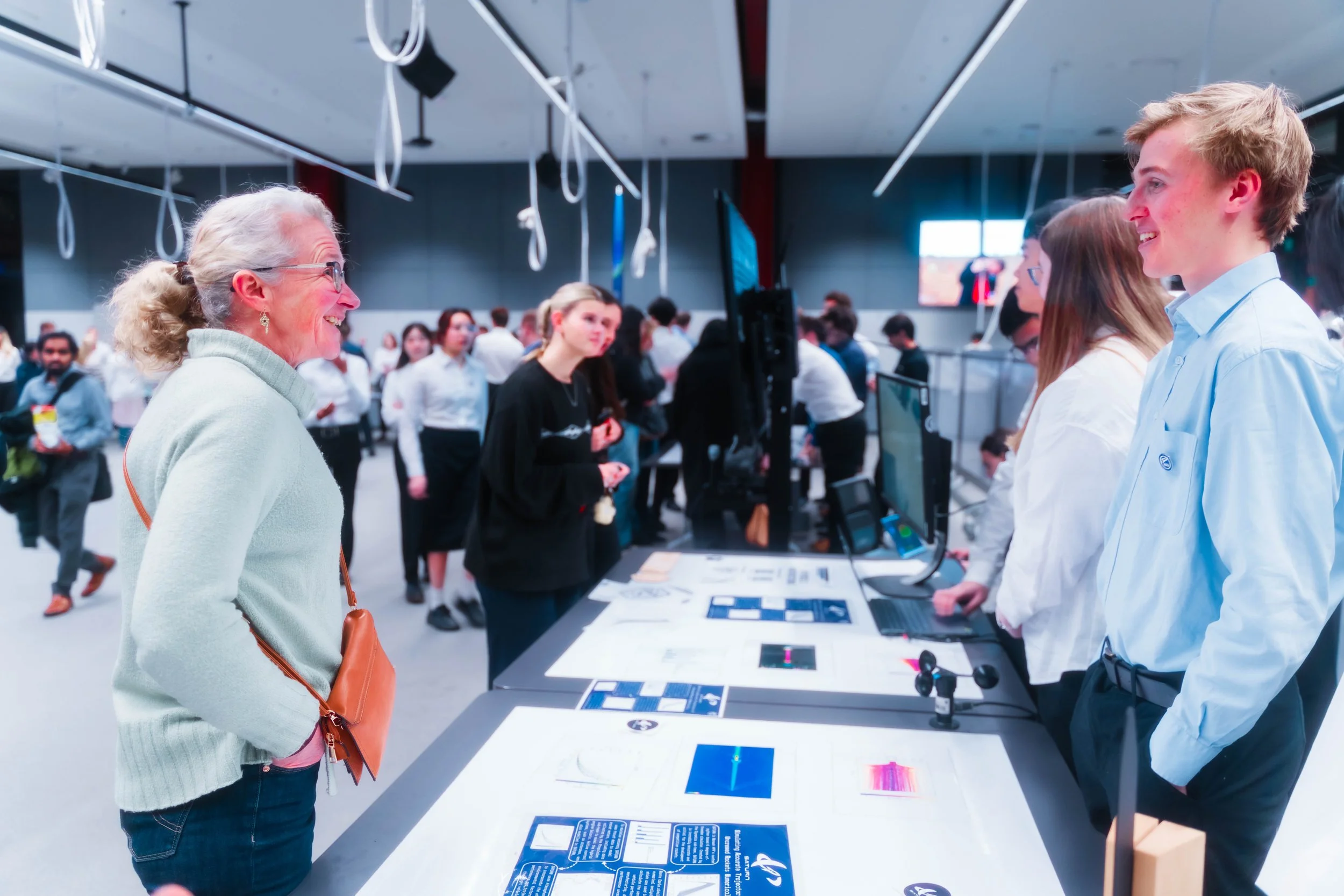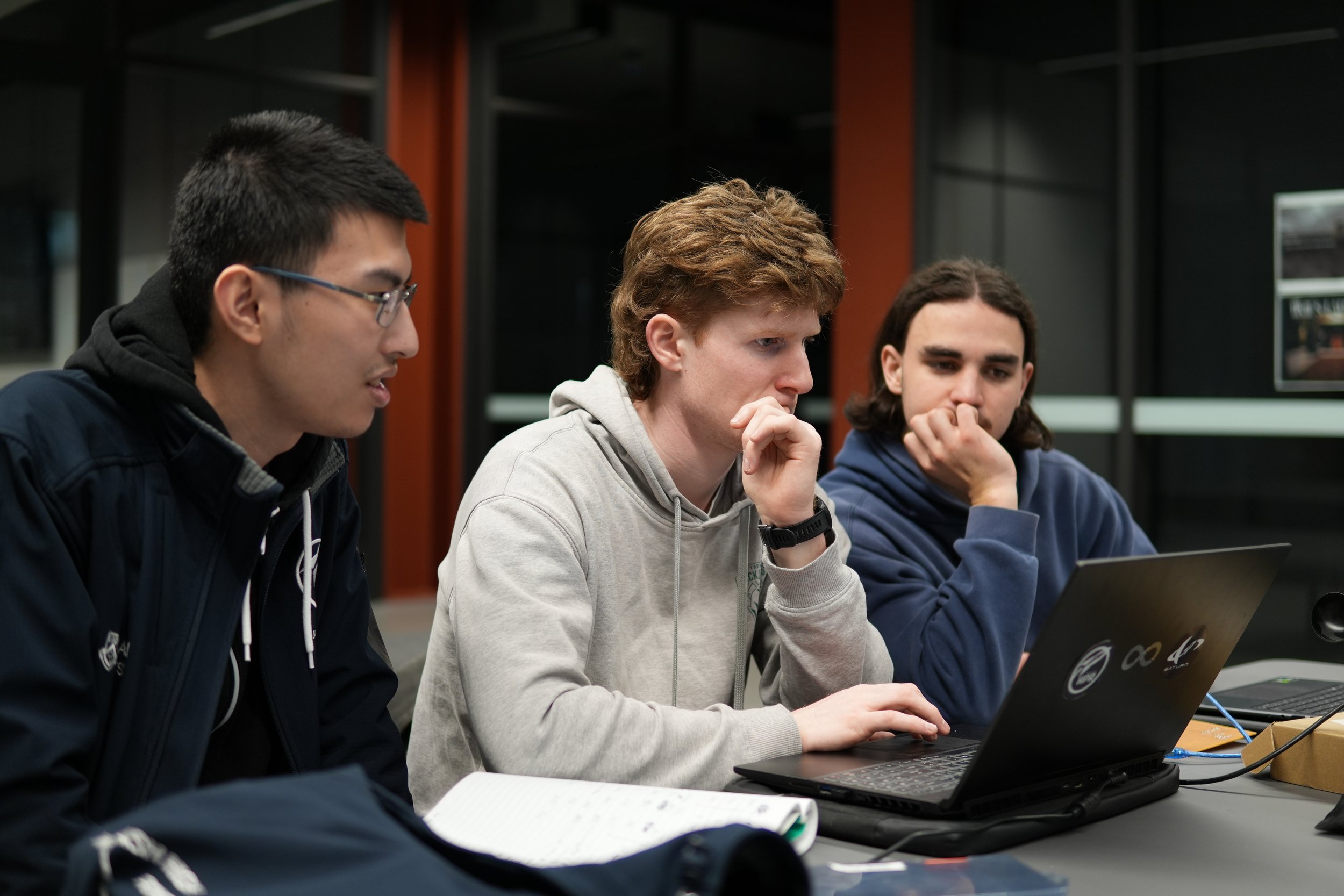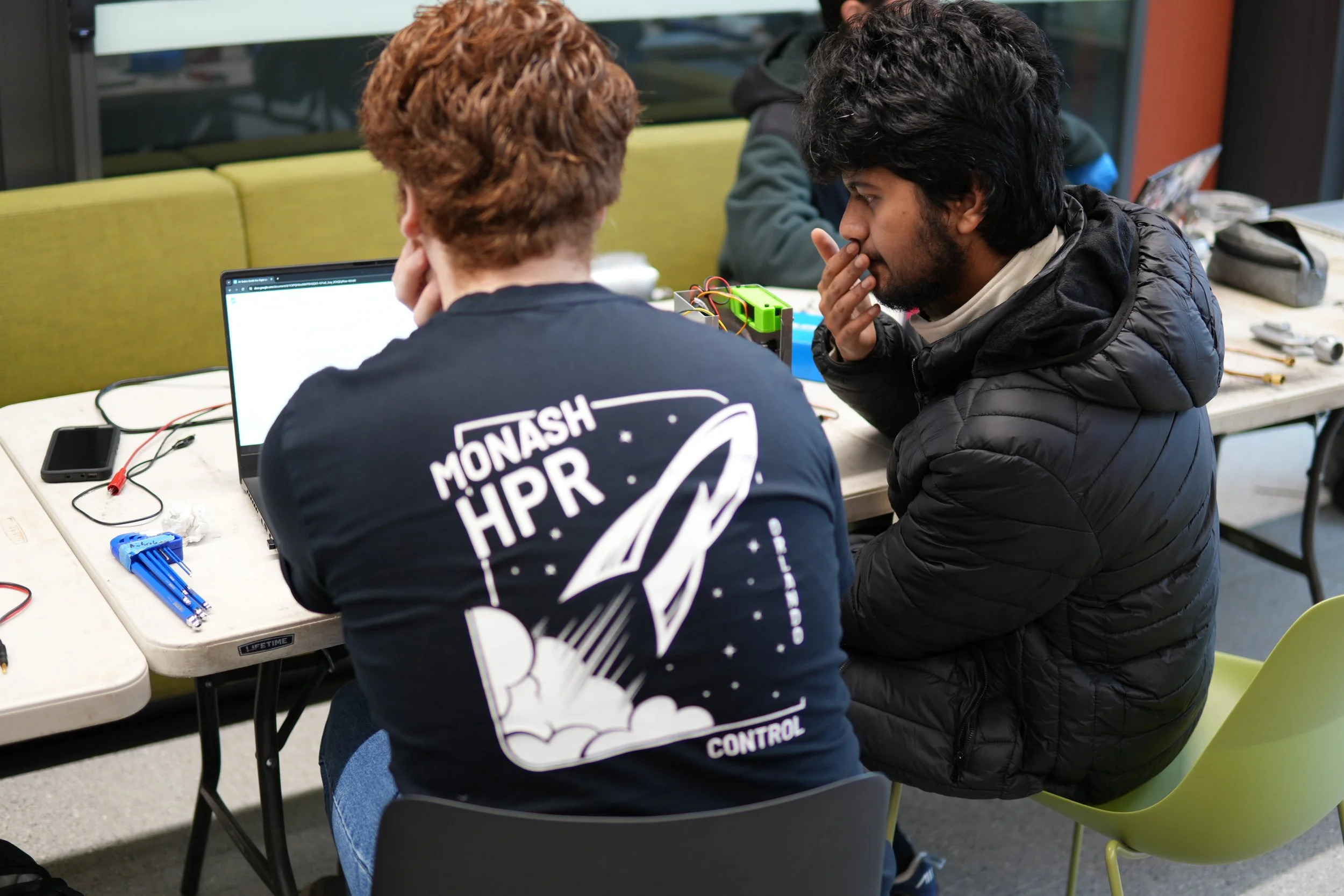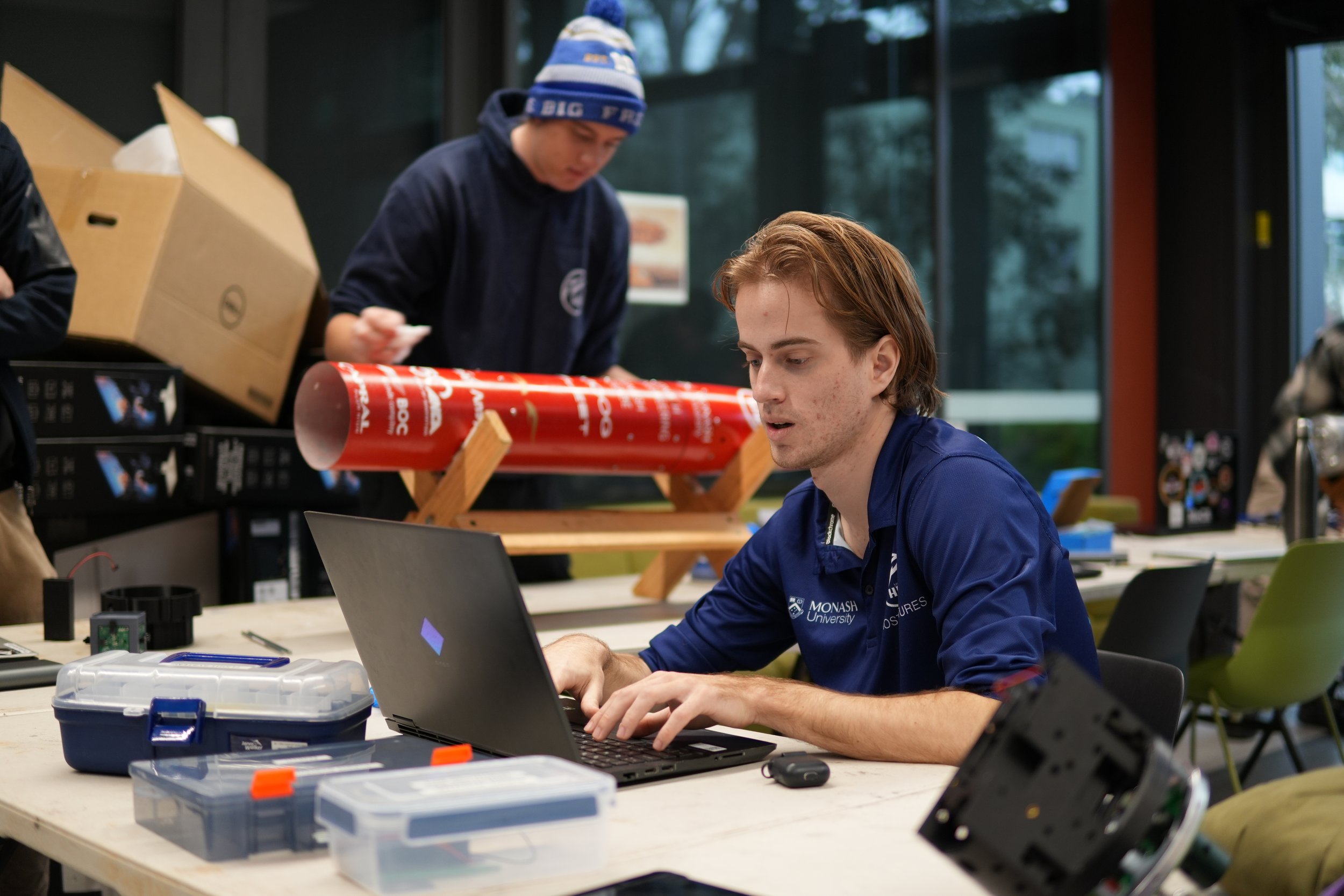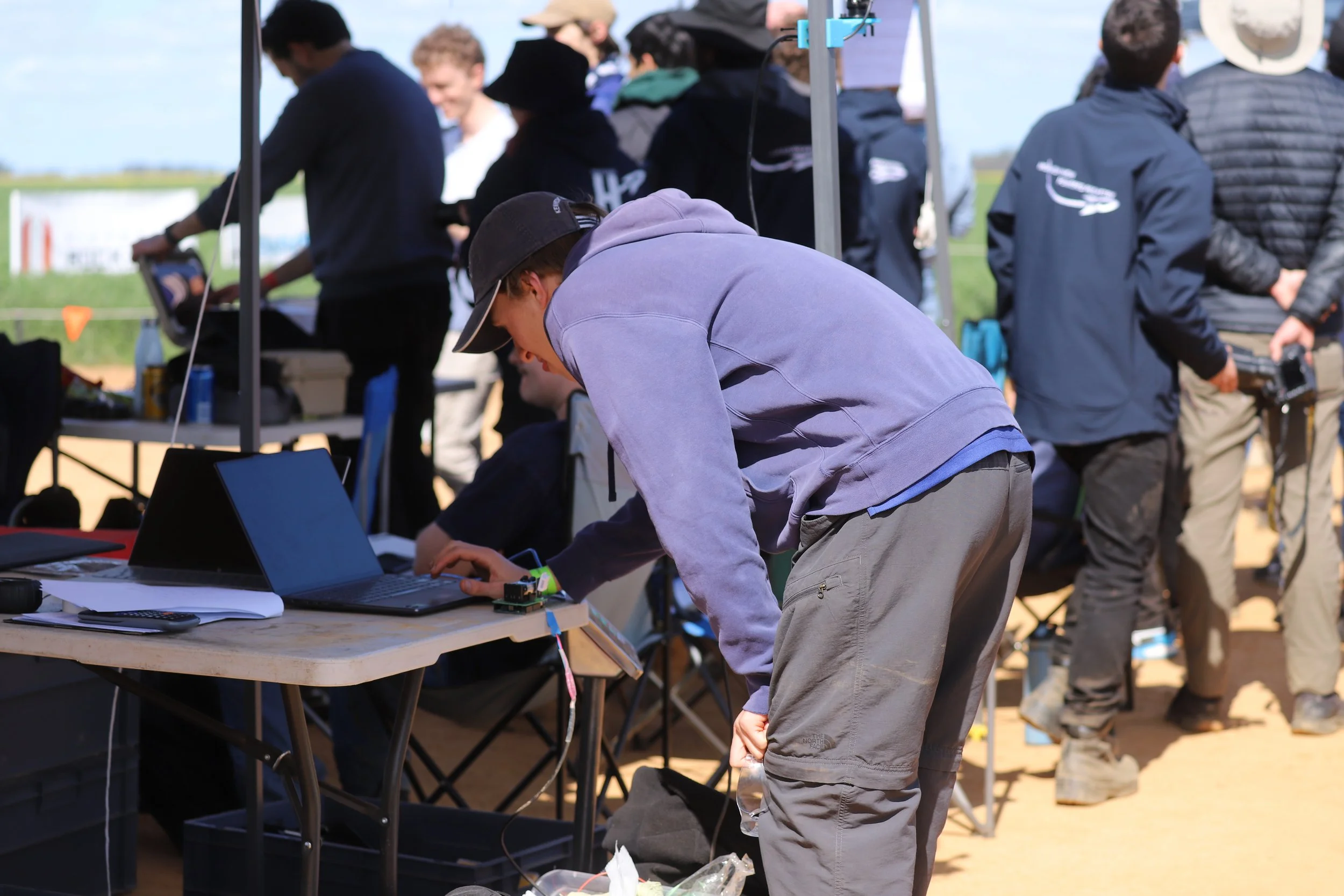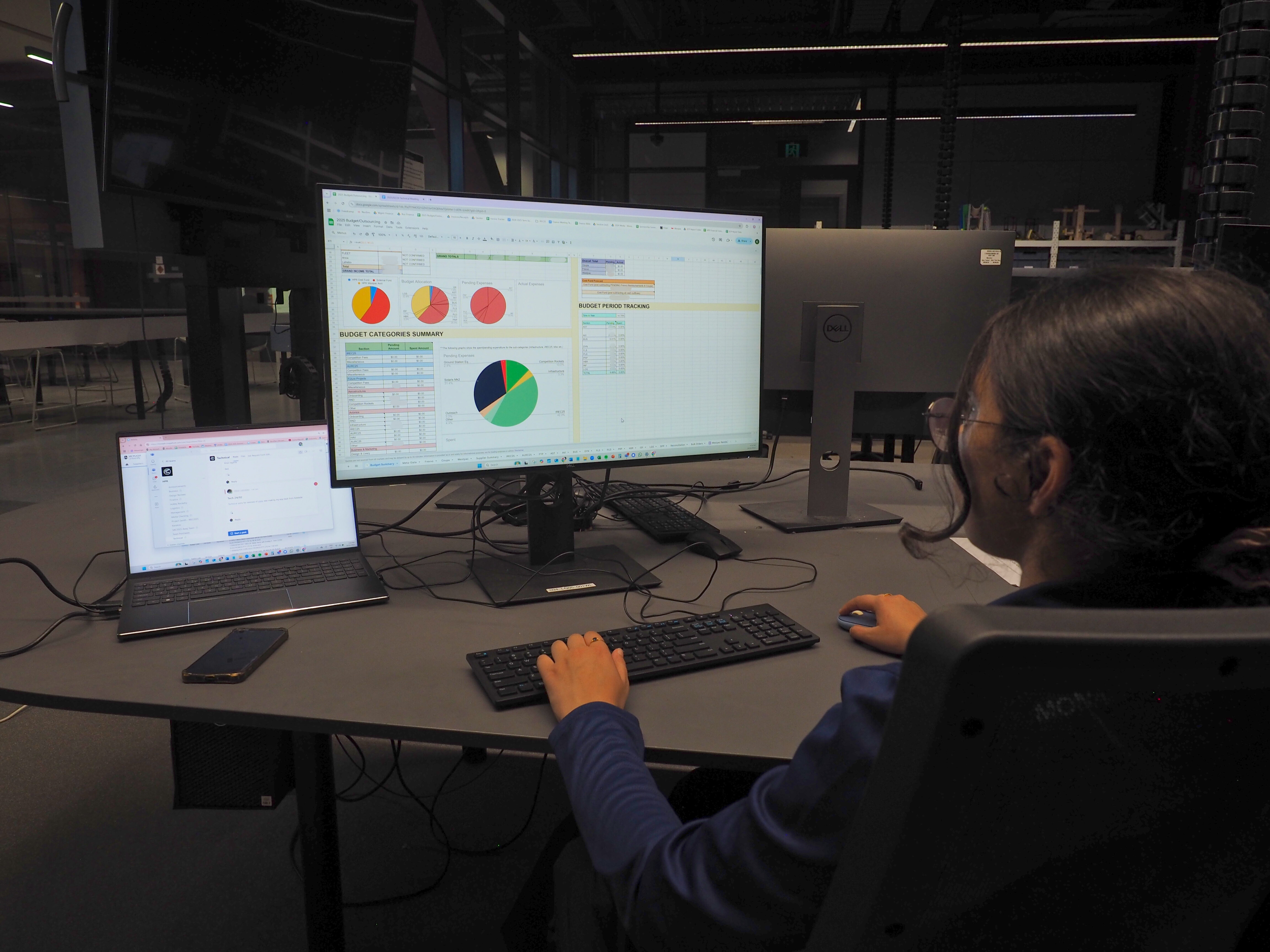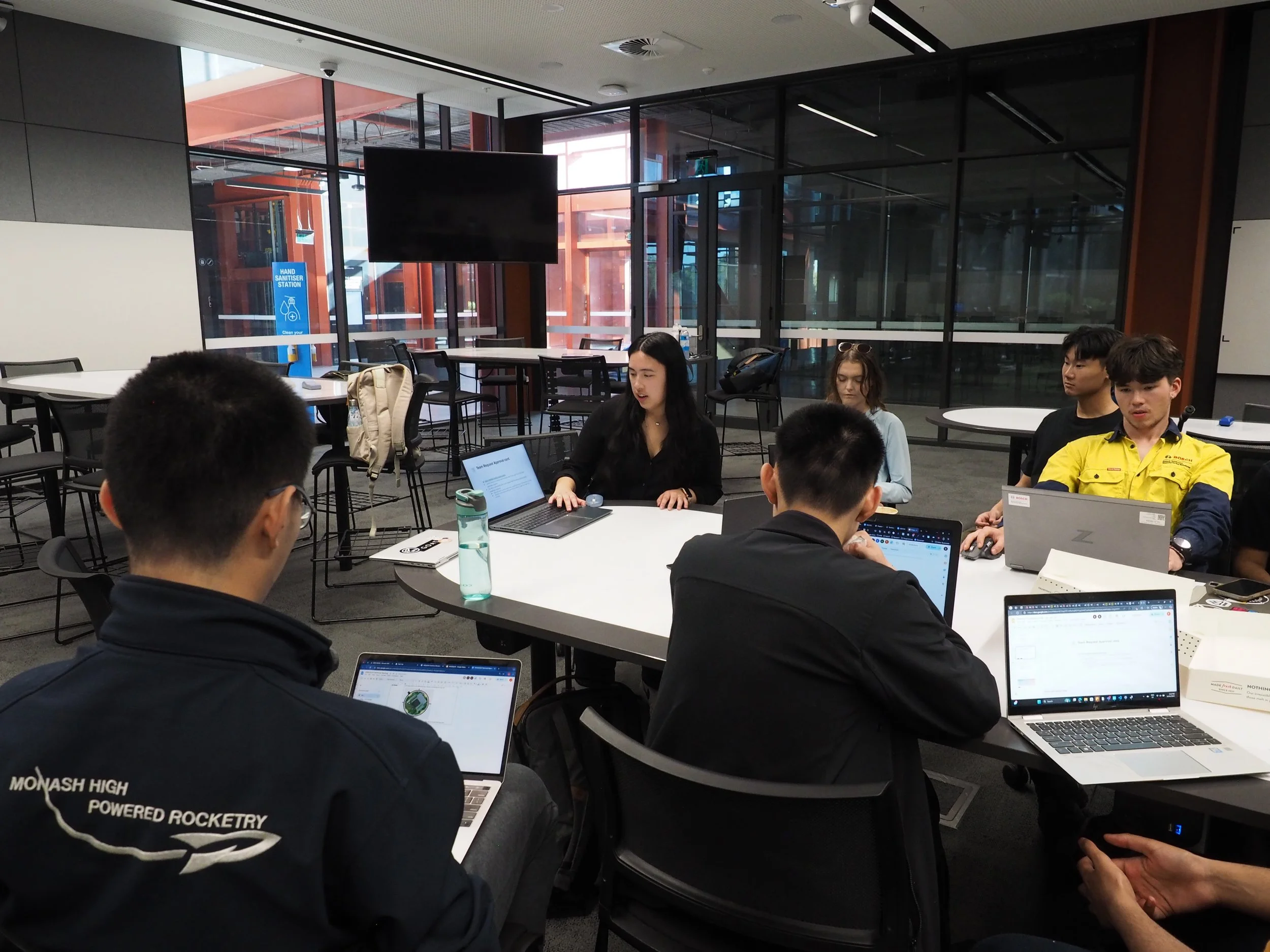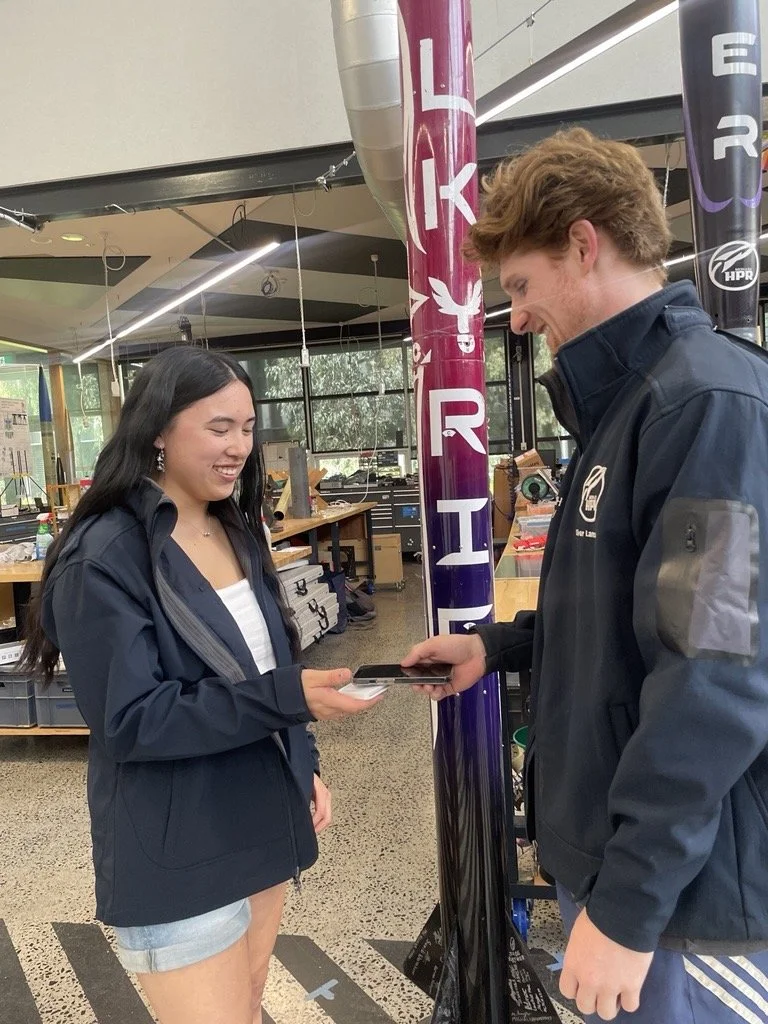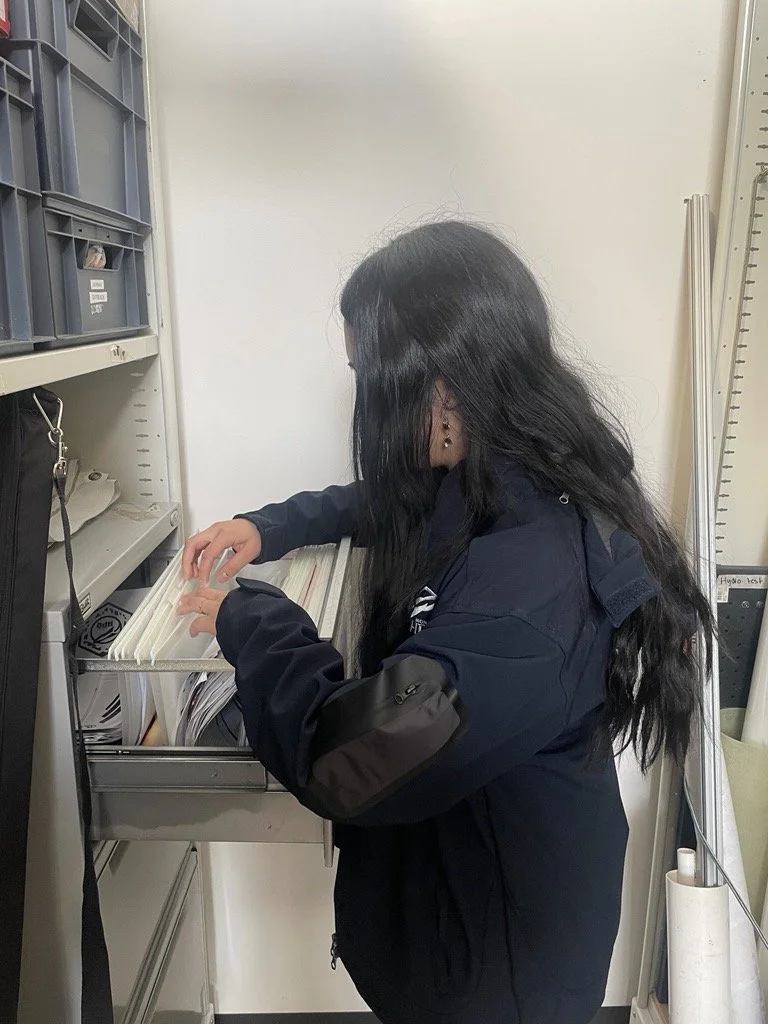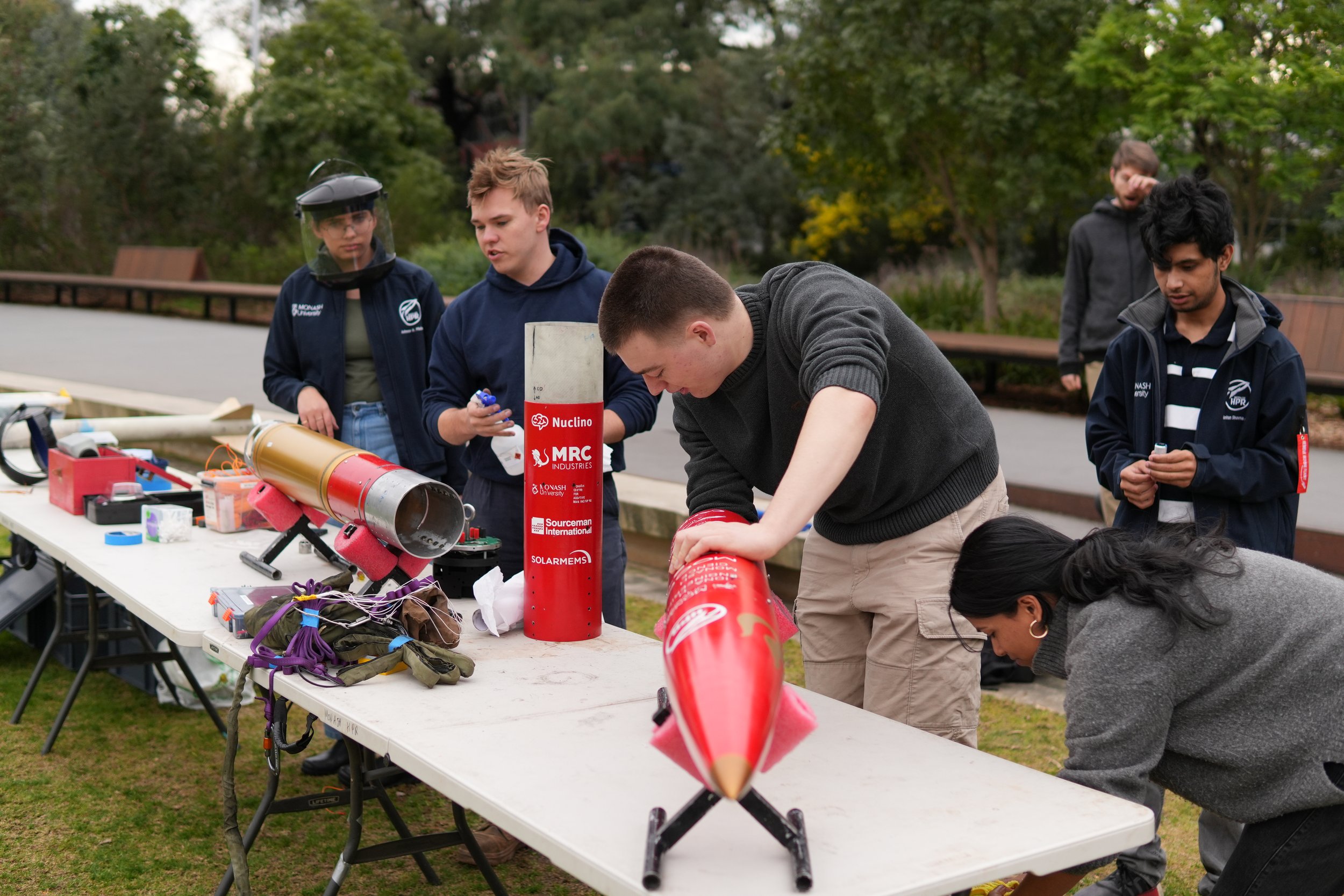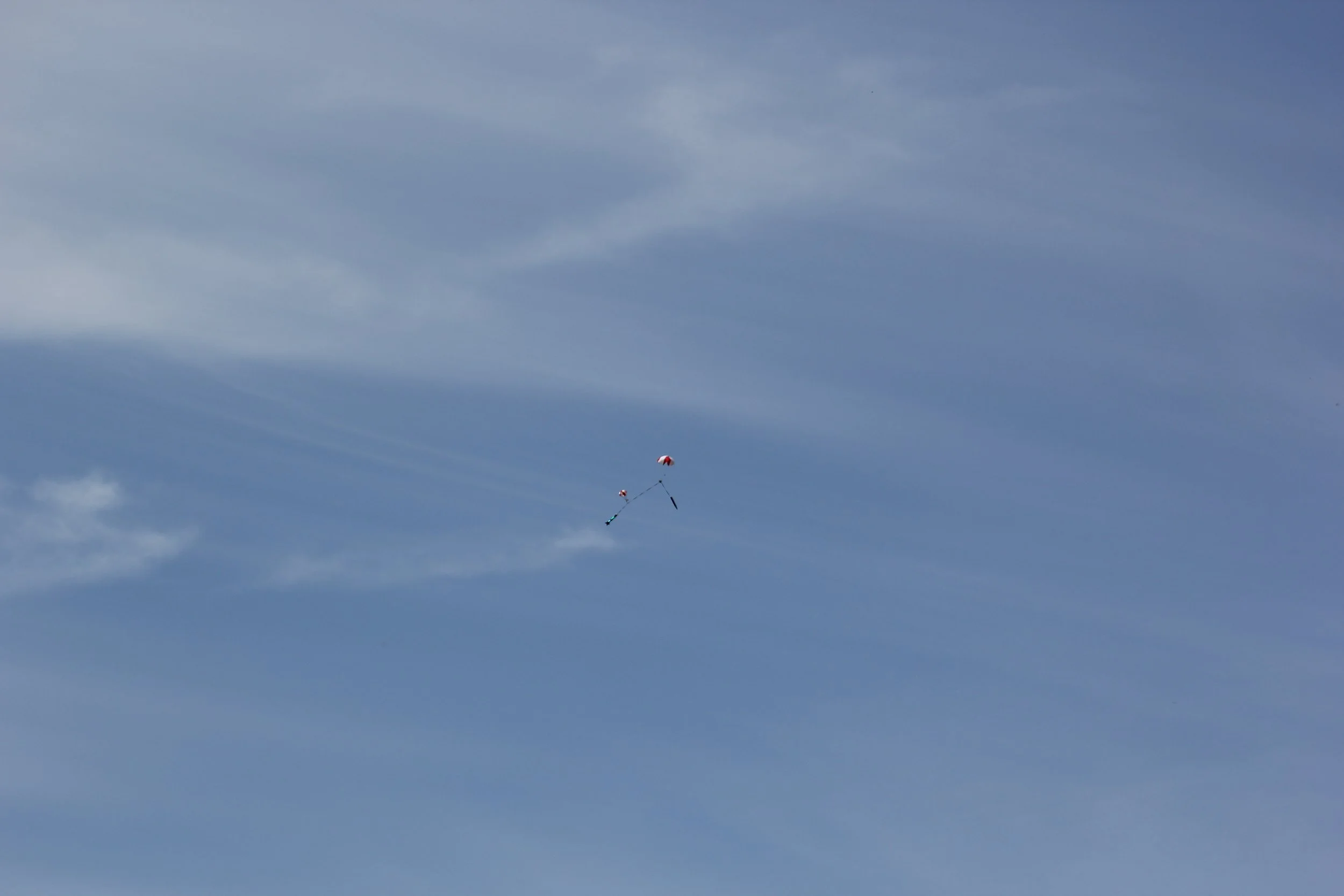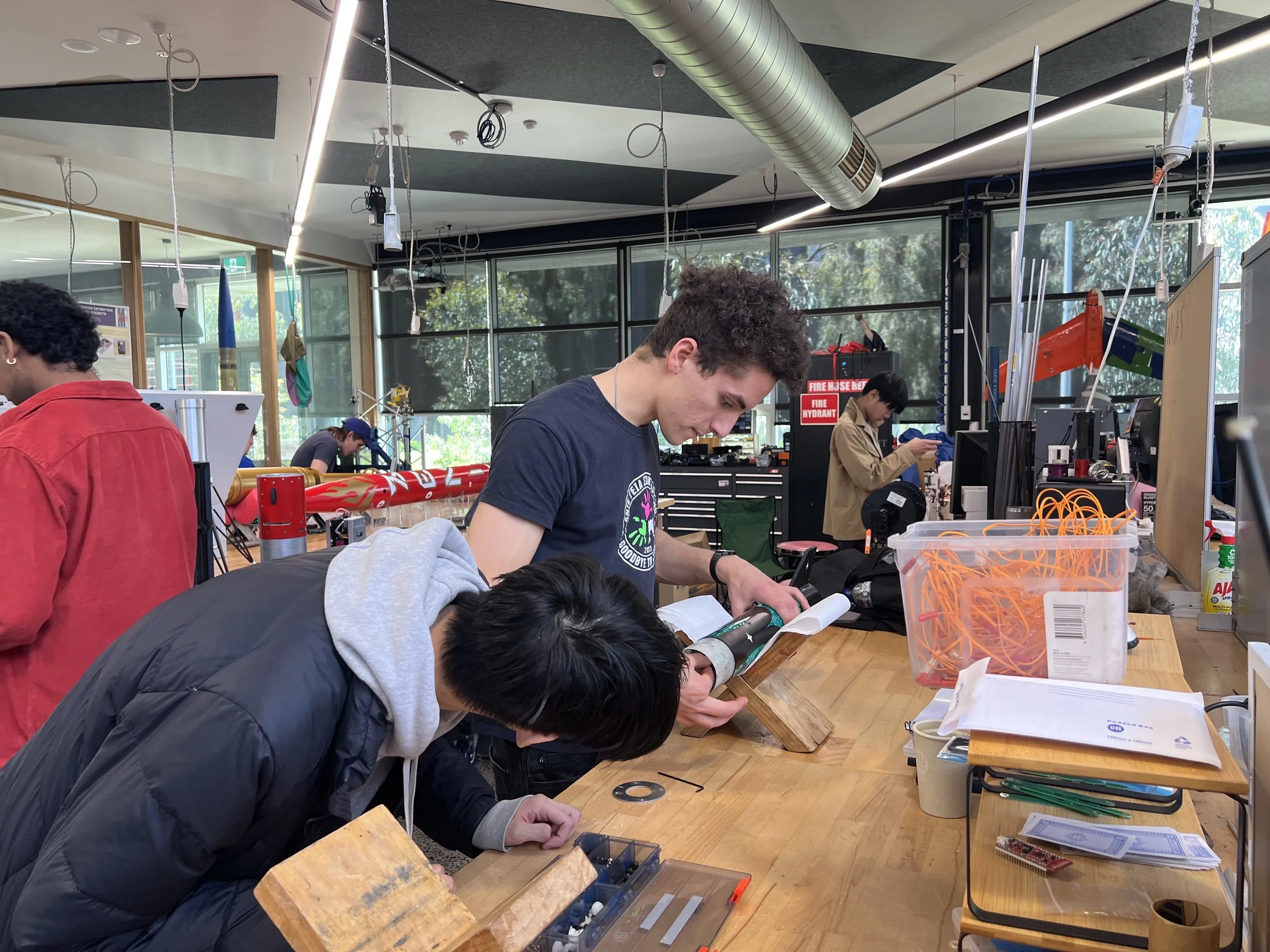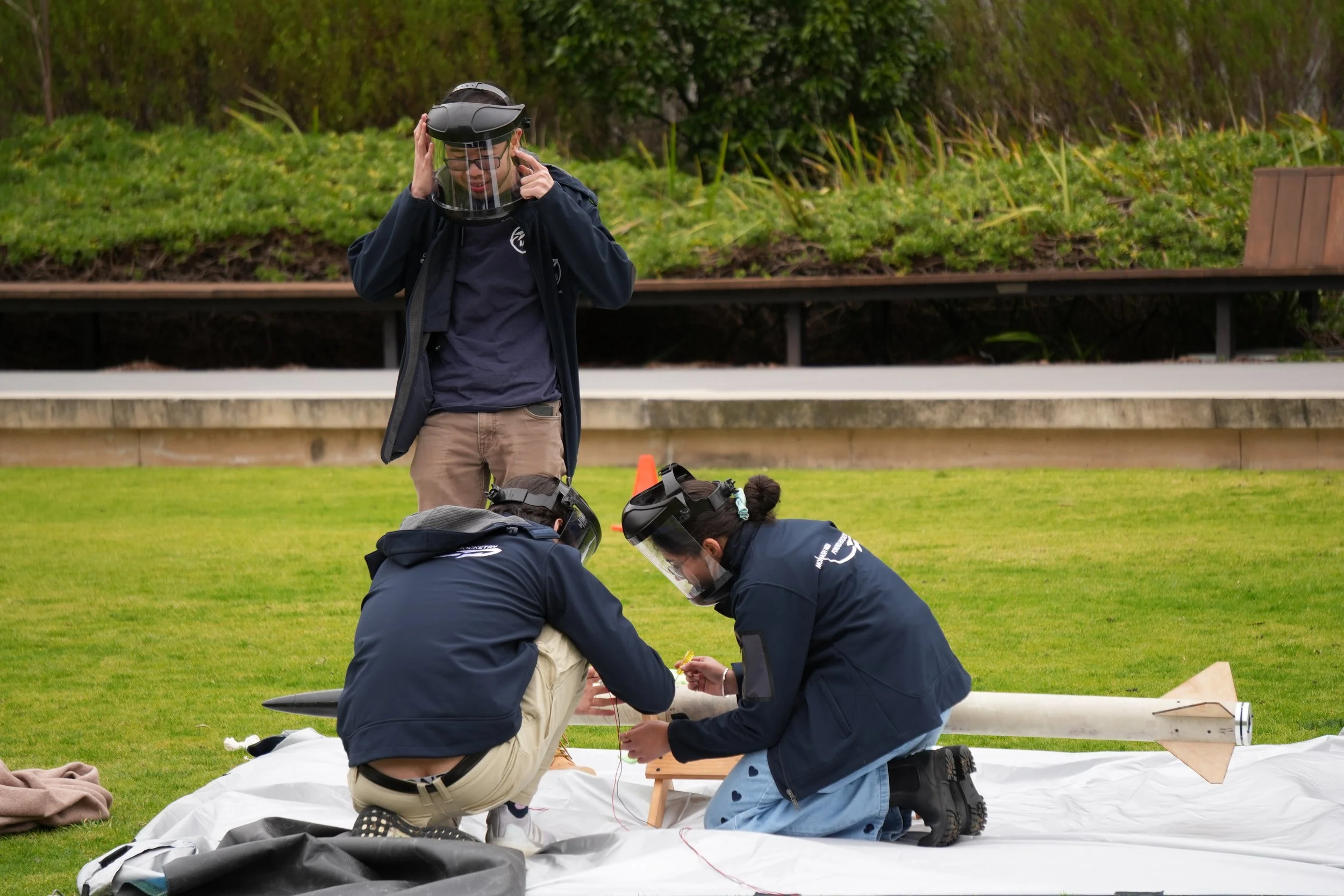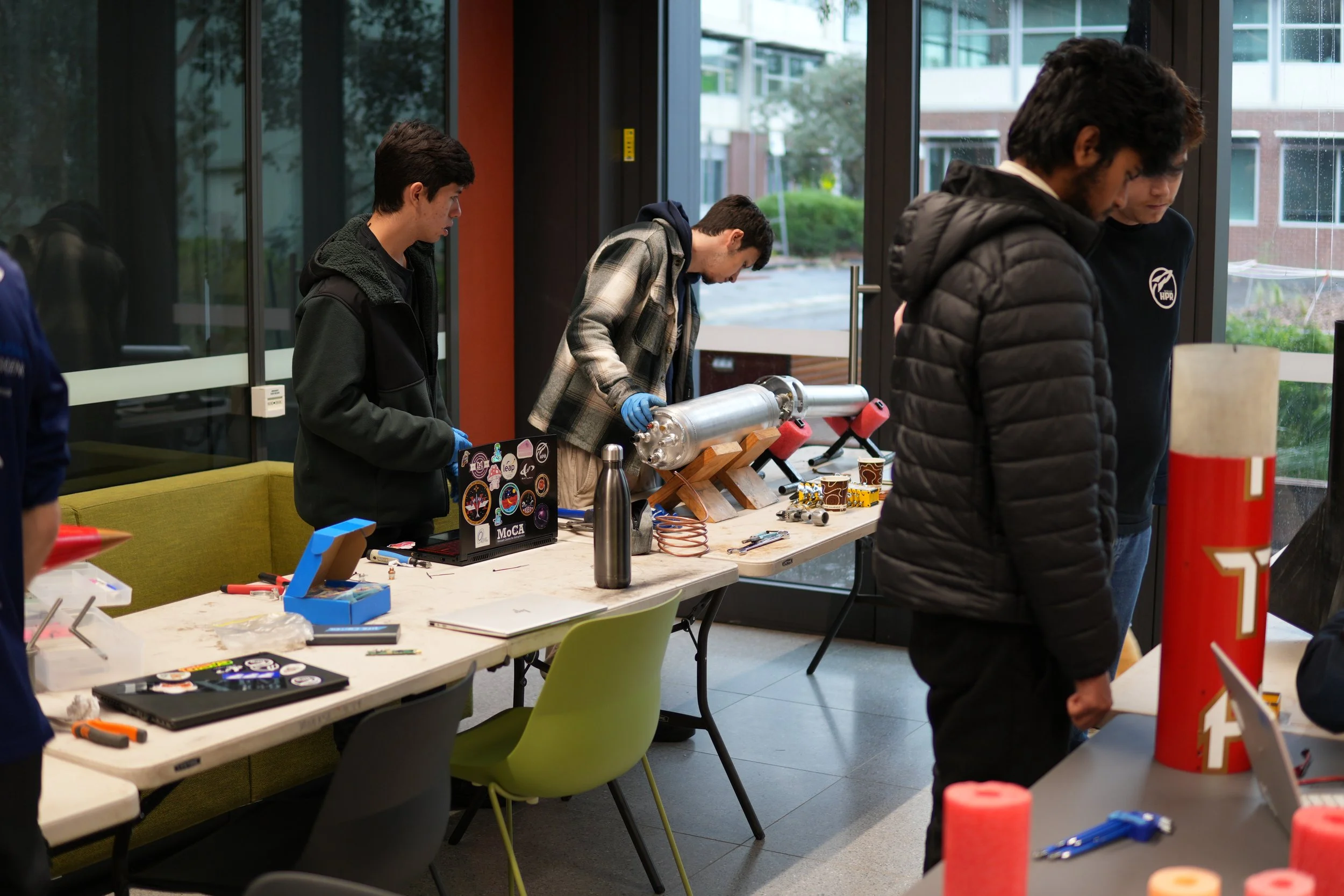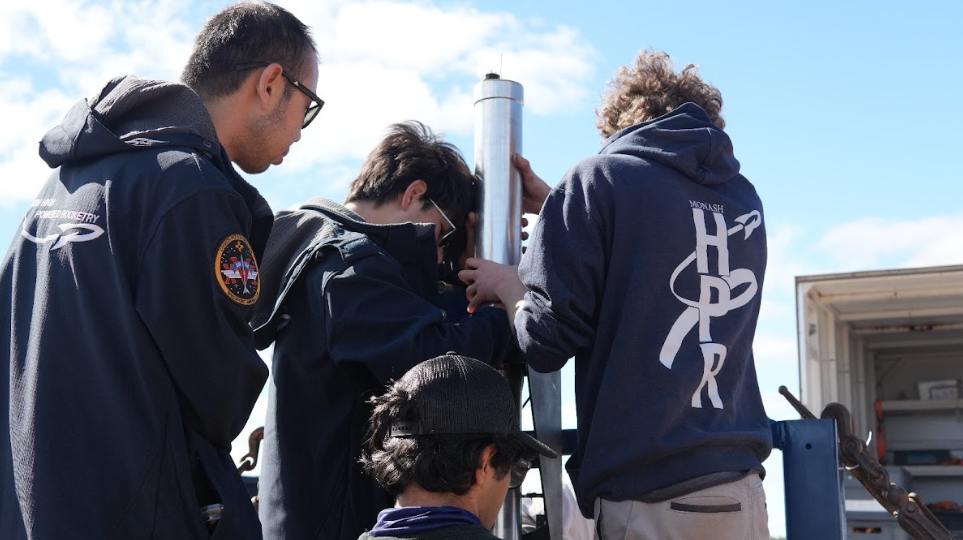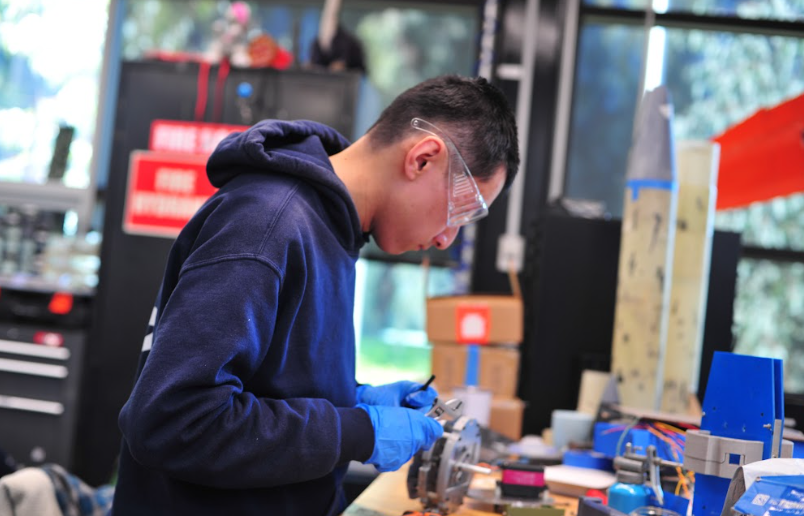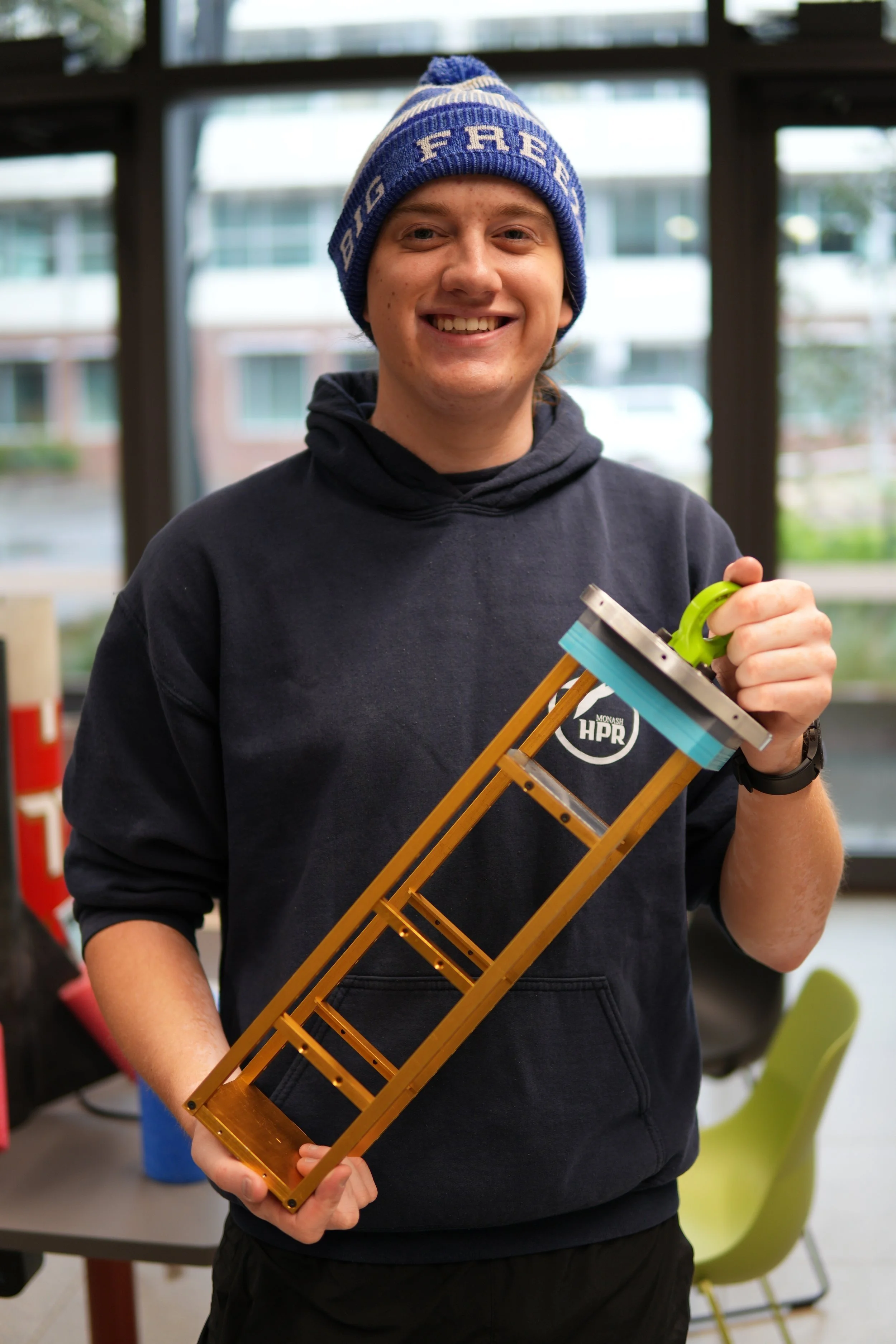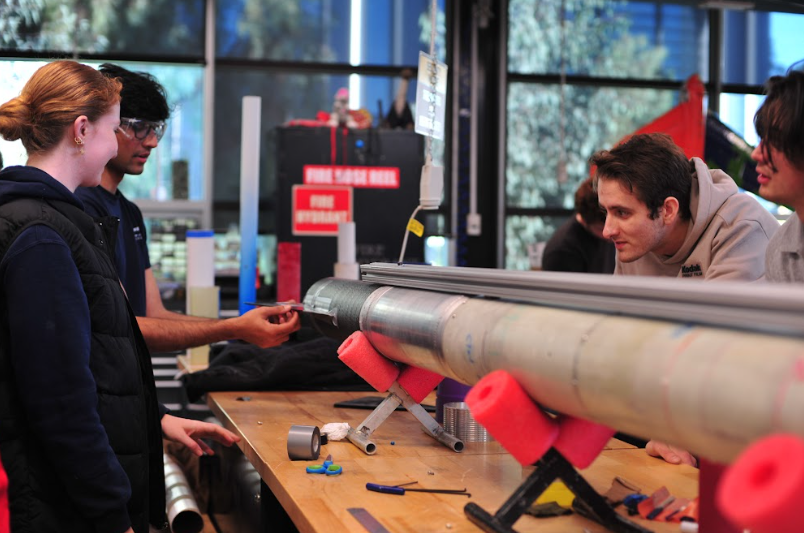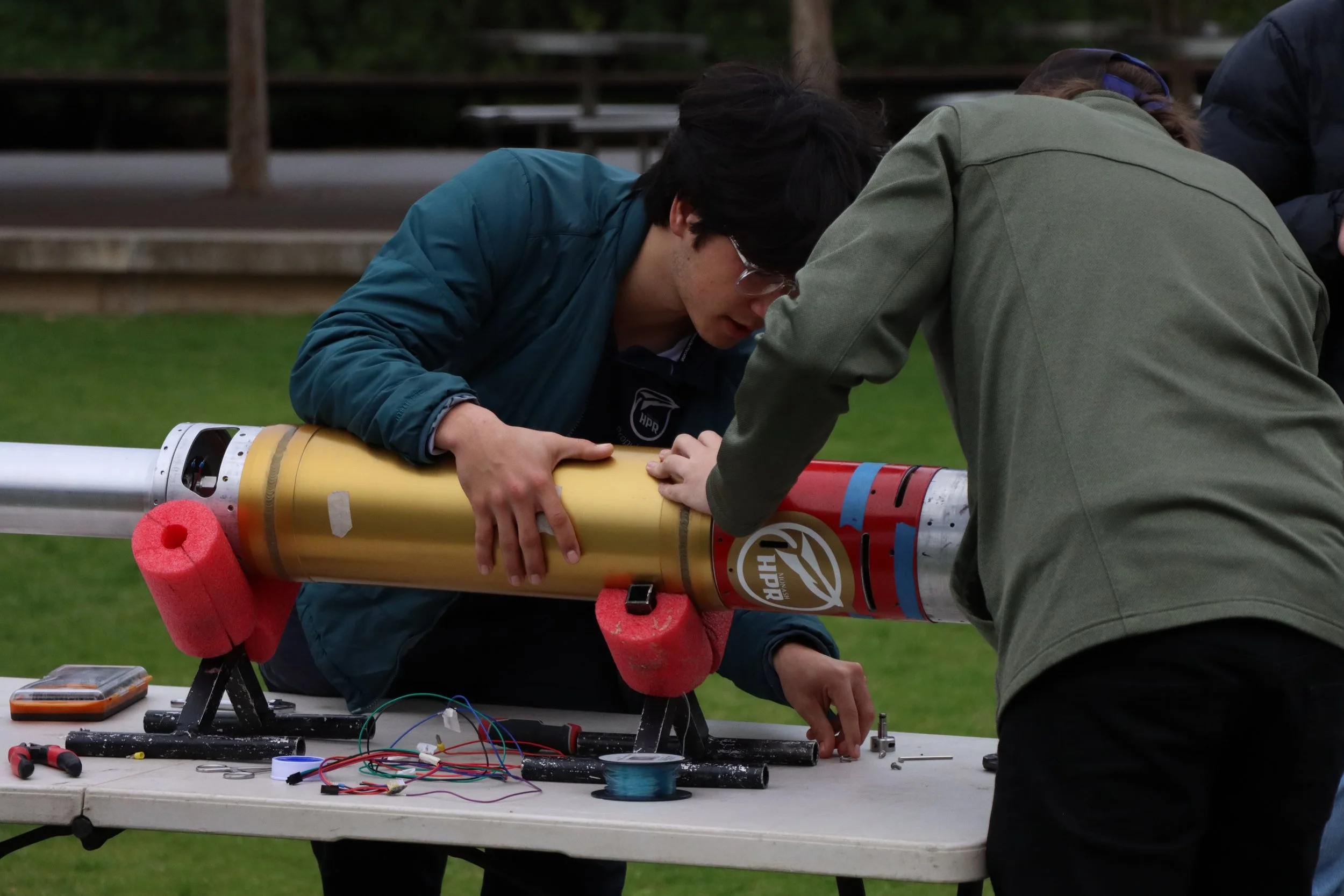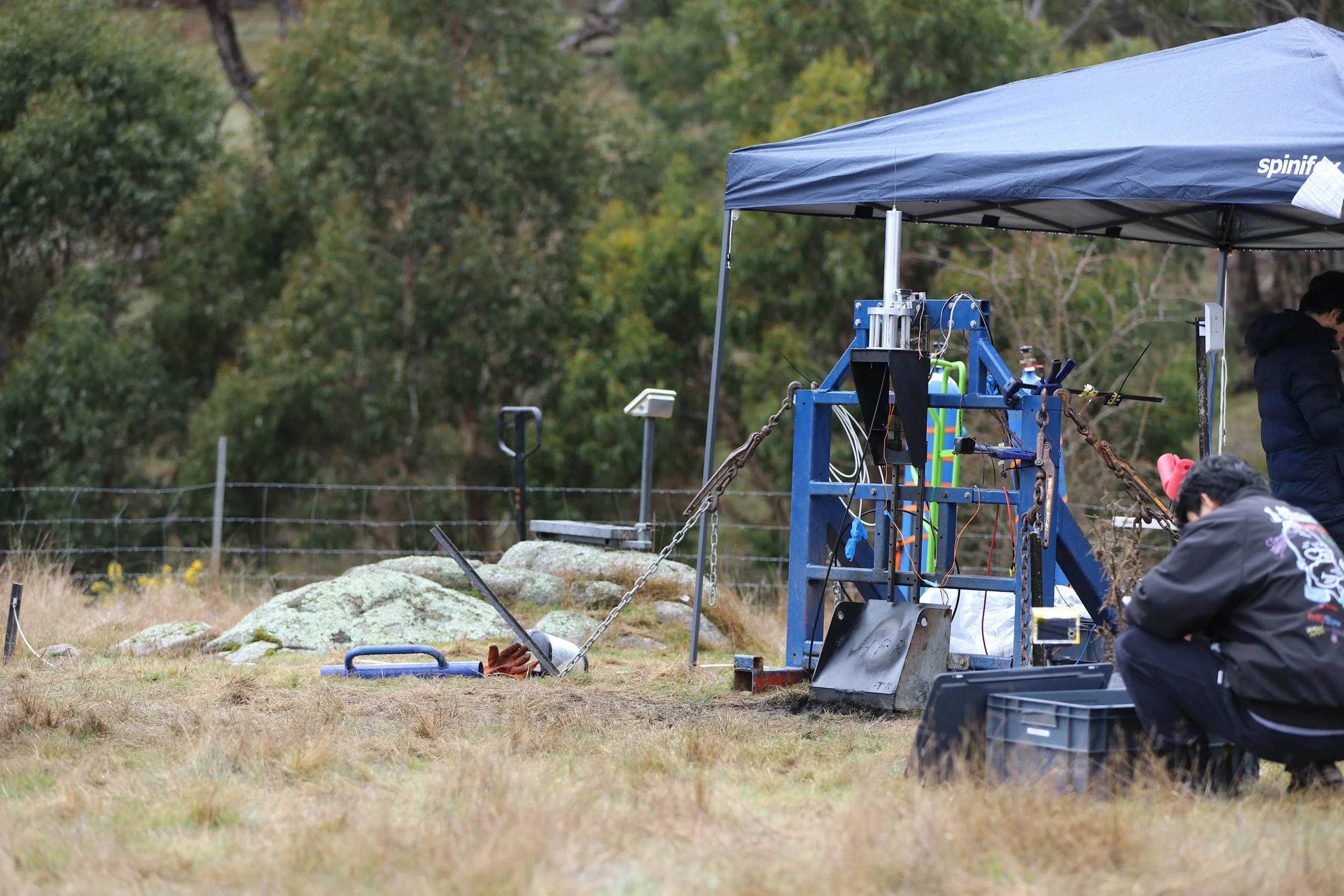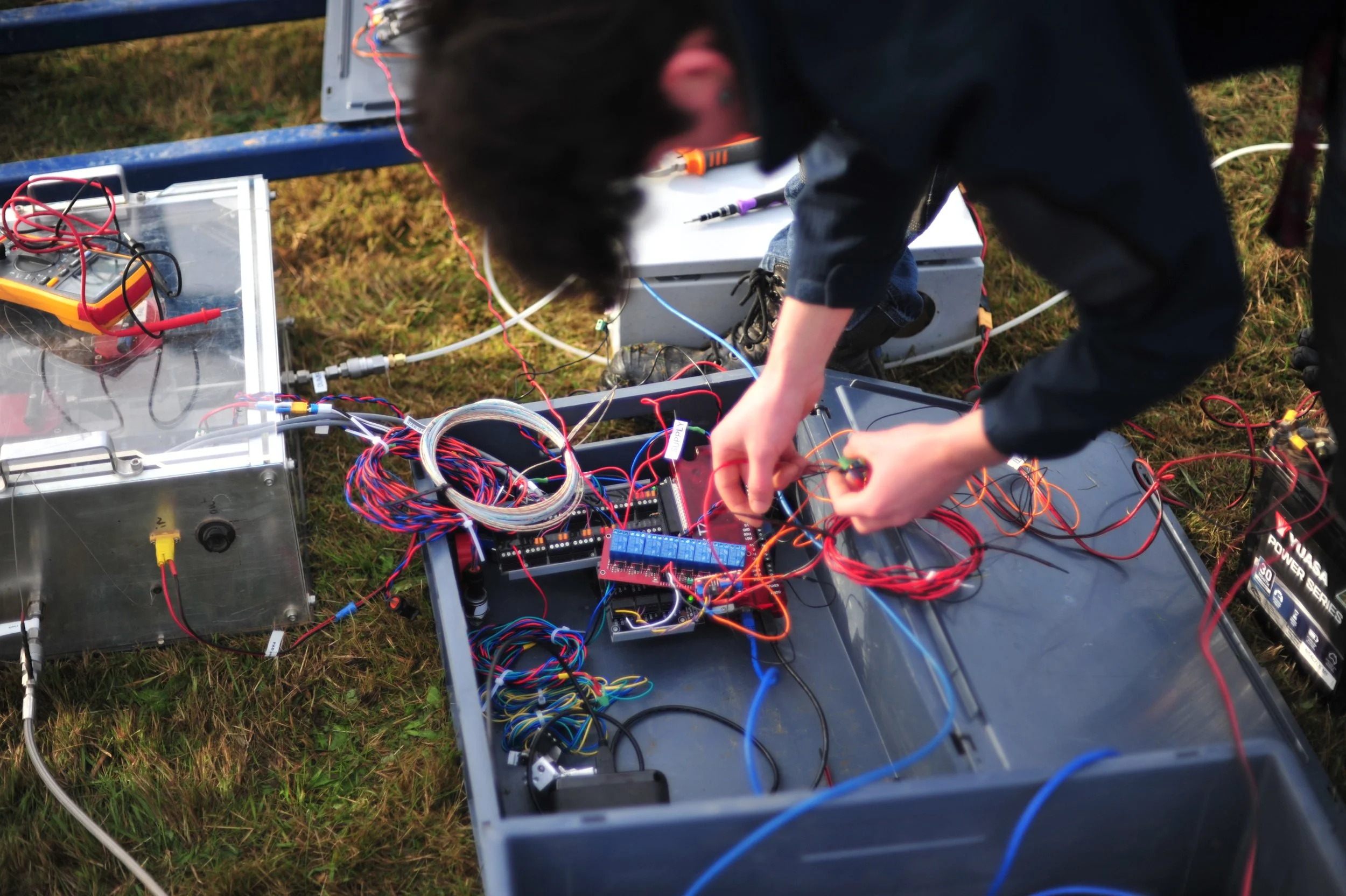
Team
Monash HPR consists of over 100 members collaborating across 8 distinct sections.
AEROSTRUCTURES
Aerostructures is the section responsible for the design, validation, manufacturing and testing of all airframes built by Monash High Powered Rocketry. We specialise in producing high quality components and systems to ensure maximum rocket performance and durability. As an Aerostructures member, you would be:
Designing structural components inside and out of the rocket from bulkheads to fins and nosecones.
Validating designs through both computer simulations and physical prototyping.
Manufacturing the airframe, from carbon fibre to aluminium a variety of hands-on technical skills are developed and passed on between members.
Validating manufactured components through both destructive and non-destructive testing
AVIONICS
Avionics is dedicated to supporting other subteams in the design and manufacturing of electrical and computer systems.
As an Avionics member, you would be:
Designing and building flight electronics for our rockets using STM32 and Altium
Learning how to work with avionics tech, including GPS, Li-ion battery systems, and telemetry.
Developing and testing embedded firmware for rocketry applications.
Conducting hardware-in-the-loop (HIL) testing, simulating full rocket flights on the hardware you created.
BUSINESS
The Business team of Monash HPR is responsible for coordinating all non-engineering aspects of the team. As a Business member, you would be:
Utilise photography, graphic design, and video editing skills to produce impactful media
Engage with external parties by conducting workshops to encourage the next generation of students to pursue rocketry and STEM through community and school outreach events.
Establish and maintain connections with team sponsors.
Manage the logistics of planning and organising major team events.
Design team merchandise and rocket liveries.
DYNAMICS
Dynamics as a whole is responsible for the modelling and simulation of all the team’s rockets. As a dynamics member you would be:
Working with SATURN, our custom python based 6 degree of freedom trajectory simulator
Performing Computational Fluid Dynamics analysis
Analysing and assessing the trajectory and performance of rockets based on SATURN simulations.
Have input into rocket design decisions to ensure a safe and successful flight
FINANCE
Finance is the section responsible for managing the budget and tracking all expenditures made by the Monash HPR team. As a finance member, you would be:
Discussing with all sections about their financial needs, managing their section budget and the team’s competition budget through regular communication and semi-annual budget meetings
Evaluating the financial impact and risks of purchases to support smart, sustainable decision-making across the team
Creating in-depth reports and implementing process improvements to forecast and manage future expenditure, using tools such as Google Sheets, developing new ideas to improve our financial system
Organising and processing all team purchases, taking into account delivery logistics, costs, and requirements
Reconciling purchases to monitor actual expenditure against budgeted amounts
FLIGHT SYSTEMS
Flight Systems is responsible for the safe deployment of the rocket’s recovery systems. As a Flight Systems member, you would be:
Designing, manufacturing, and testing the mechanical components of our deployment and control systems.
Using CAD software to craft and validate intricate mechanical systems.
Collaborating closely with other sub teams to ensure integration and optimal performance across the entire rocket.
Tuning and optimising mechanical systems, bridging the gap between design simulations and actual flight performance.
Ensuring precise control throughout the rocket's flight and guarantee its safe and successfully recovered.
PAYLOAD
Payload is responsible for the research and development of experimental subsystems that are launched on the team’s rockets. As a Payload member, you would be:
Research and develop groundbreaking scientific experiments and innovative technology demonstrations.
Design and fabricate unique CubeSat components, tailor-made for integration with our rockets.
Craft software to bring our payload experiments to life, analysing data to uncover new insights.
PROPULSION
Propulsion is responsible for design, manufacture and maintenance of team rocket motors including Solaris, our completely student developed hybrid rocket engine. We are looking for both electrical and mechanical/aero recruits (Note. it is not essential that this is your degree). As a Propulsion member you would be:
Participating in rocket motor testing, static fires and fieldwork
Designing components both electrical and mechanical for team rocket engines
Designing testing infrastructure and plans
Working with high pressure fluids and supersonic flow
Iterating and improving upon existing flight architecture.
Simulating and analysing thermodynamic performance for team engines


